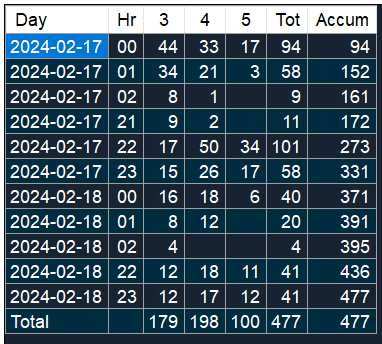ARRL DX CONTEST CW Review
Aiming to beat last year's score, I participated in the limited SO28MHz Low Power category.
I had the impression that recent conditions were the same or better than last year, so I was hoping to break the record.
At the start, 100Q/H at 100W was an excellent start considering that I participated from the western end of Japan.
In the first leg of the 3-hour duration, which started at 9:00 a.m. Japan Standard Time (JST), 161 QSOs were made, an increase of 60 QSOs from last year.
The second leg, which lasted five hours from around 7:00 a.m. to noon on Sunday, also got off to a good start, recording 100 QSOs per hour. However, after an hour, I was no longer called, and although I alternated between S/P and RUN, I was unable to increase my score as much as I would have liked, finishing with 395 QSOs.
I tried to make a hope in the last two hours from 7:00 a.m. JST, but there were many duplicate QSOs, and I could not make up the score well.
The final score was 477 QSOs and 52 multis.
IC-7610 6ele Yagi N1MM


